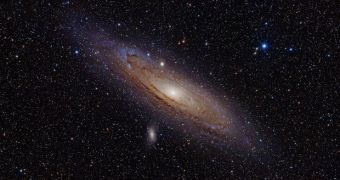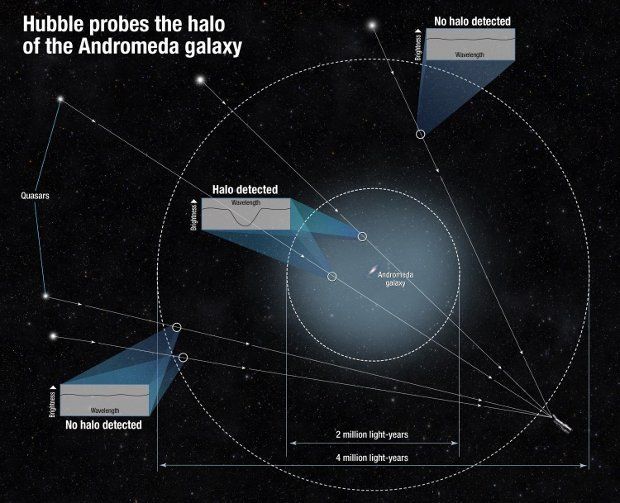At 2.5 million light-years away, the Andromeda galaxy is one of our closest neighbors. In a new study, scientists announce the discovery of a massive halo made up of gas all around this cosmic system.
The halo, which researchers say is best described as the galaxy's atmosphere, is invisible to the naked eye. To study it, astronomers turned to NASA's Hubble Space Telescope for help.
It was thus revealed that Andromeda's halo extends about 1 million light-years from the galaxy. What this means is that it reaches halfway to our home in space, the Milky Way galaxy.
Although diffuse, the halo is estimated to hold the mass equivalent of half of the Andromeda galaxy's star population, albeit in the form of hot gas, the researchers who discovered it say.
Evidence indicates this massive gas bubble surrounding Andromeda is about as old as the galaxy itself and comprises not just light gases but also heavier elements released in stellar explosions.
Just like our planet's atmosphere has a major influence on what happens on Earth, scientists believe that Andromeda's halo has a say in what happens deep inside the galaxy.
“The properties of these gaseous halos control the rate at which stars form in galaxies according to models of galaxy formation,” explains researcher Nicolas Lehner of the University of Notre Dame.
Interestingly, astronomers say that, if the Andromeda galaxy has such a large halo surrounding it, chances are so does our Milky Way. However, further studies are needed to confirm this.

 14 DAY TRIAL //
14 DAY TRIAL // 

